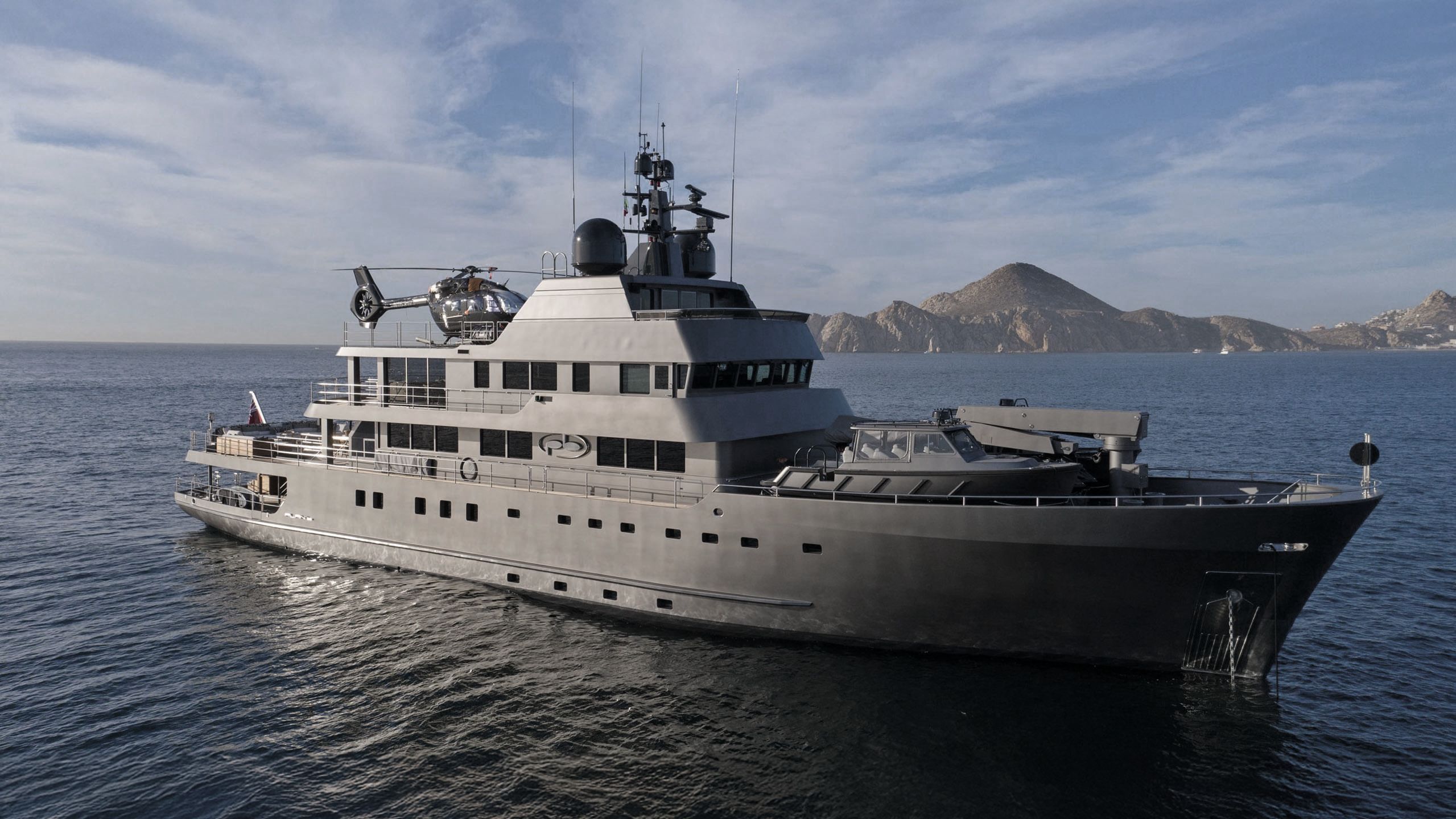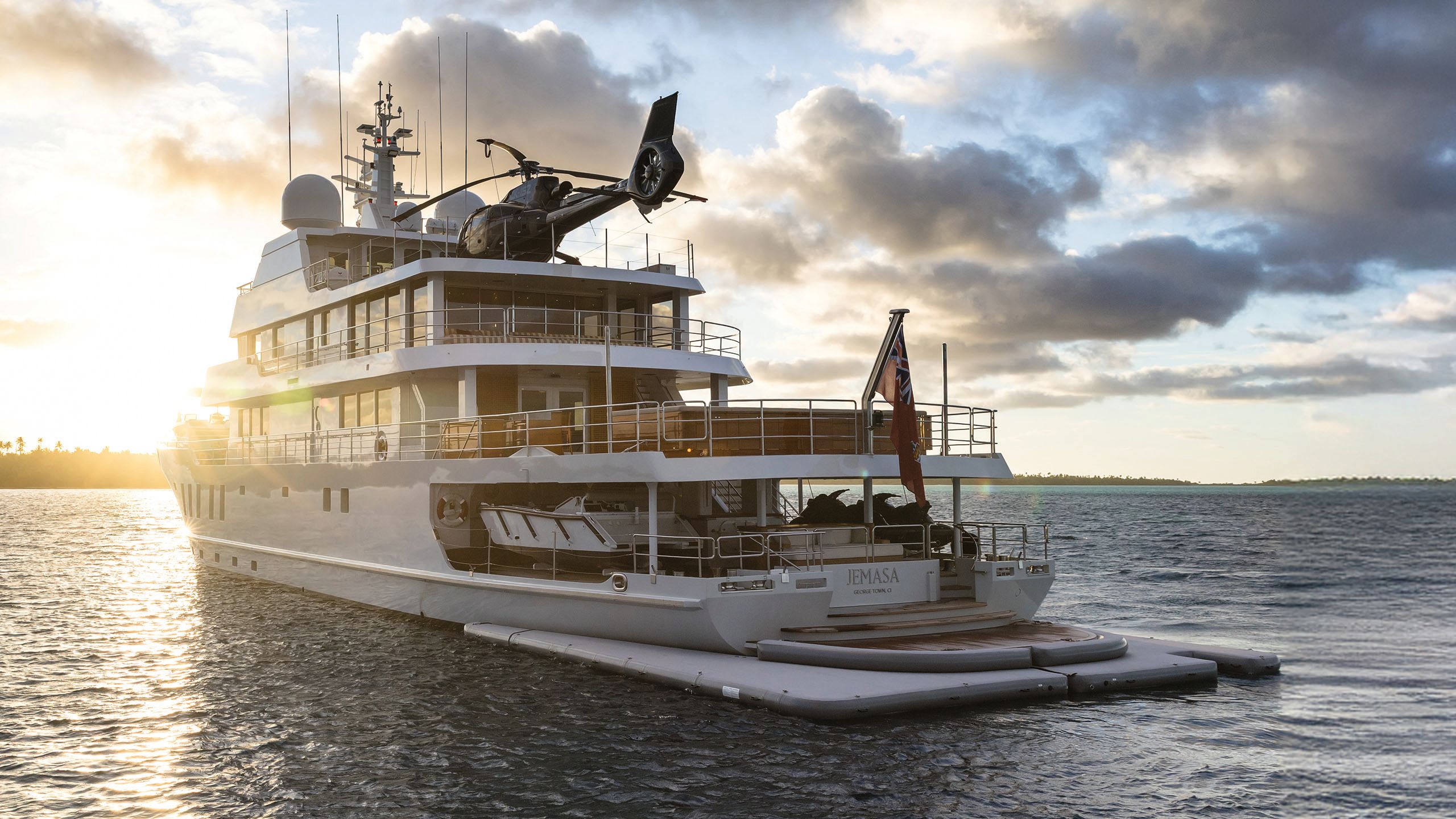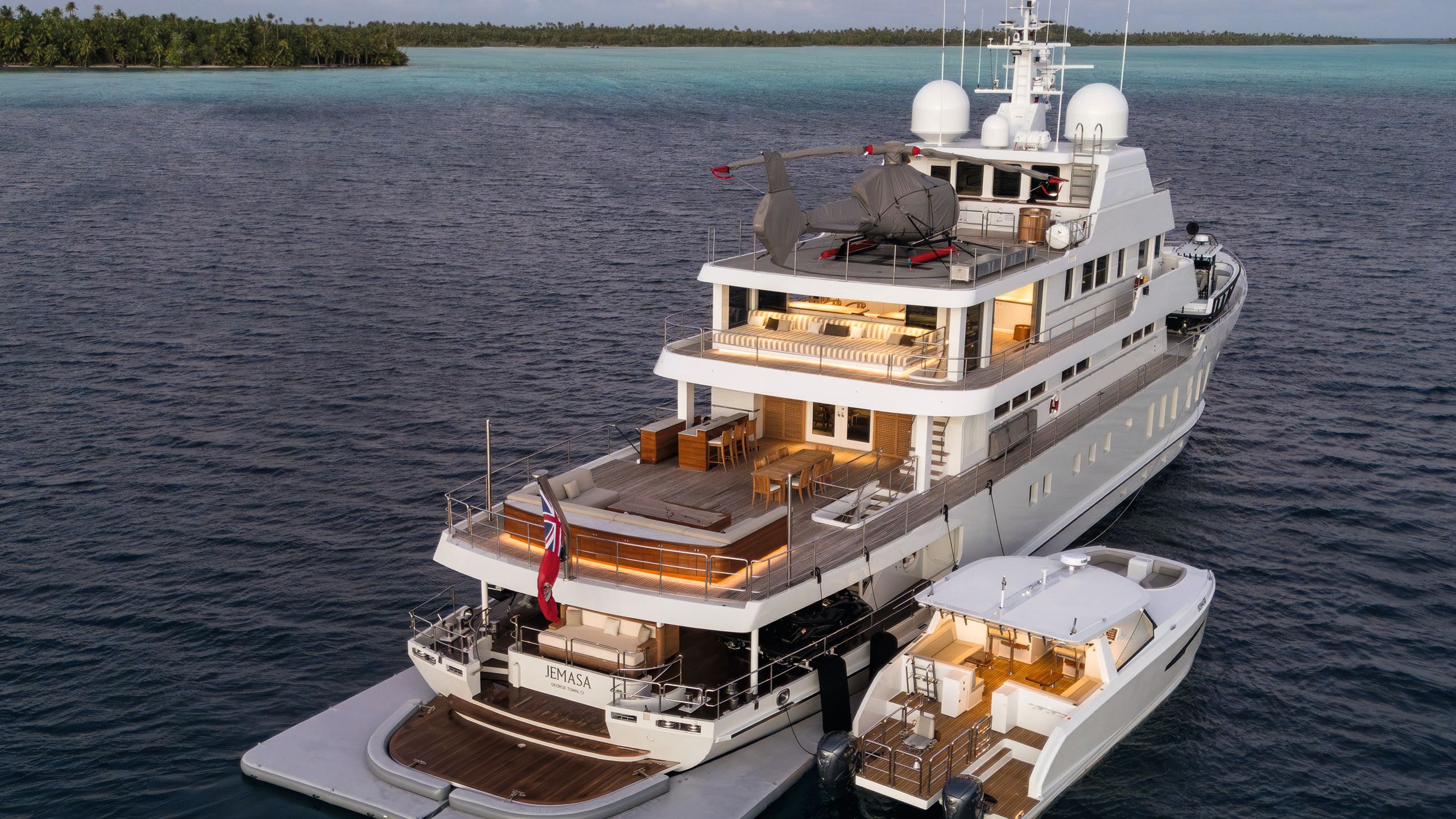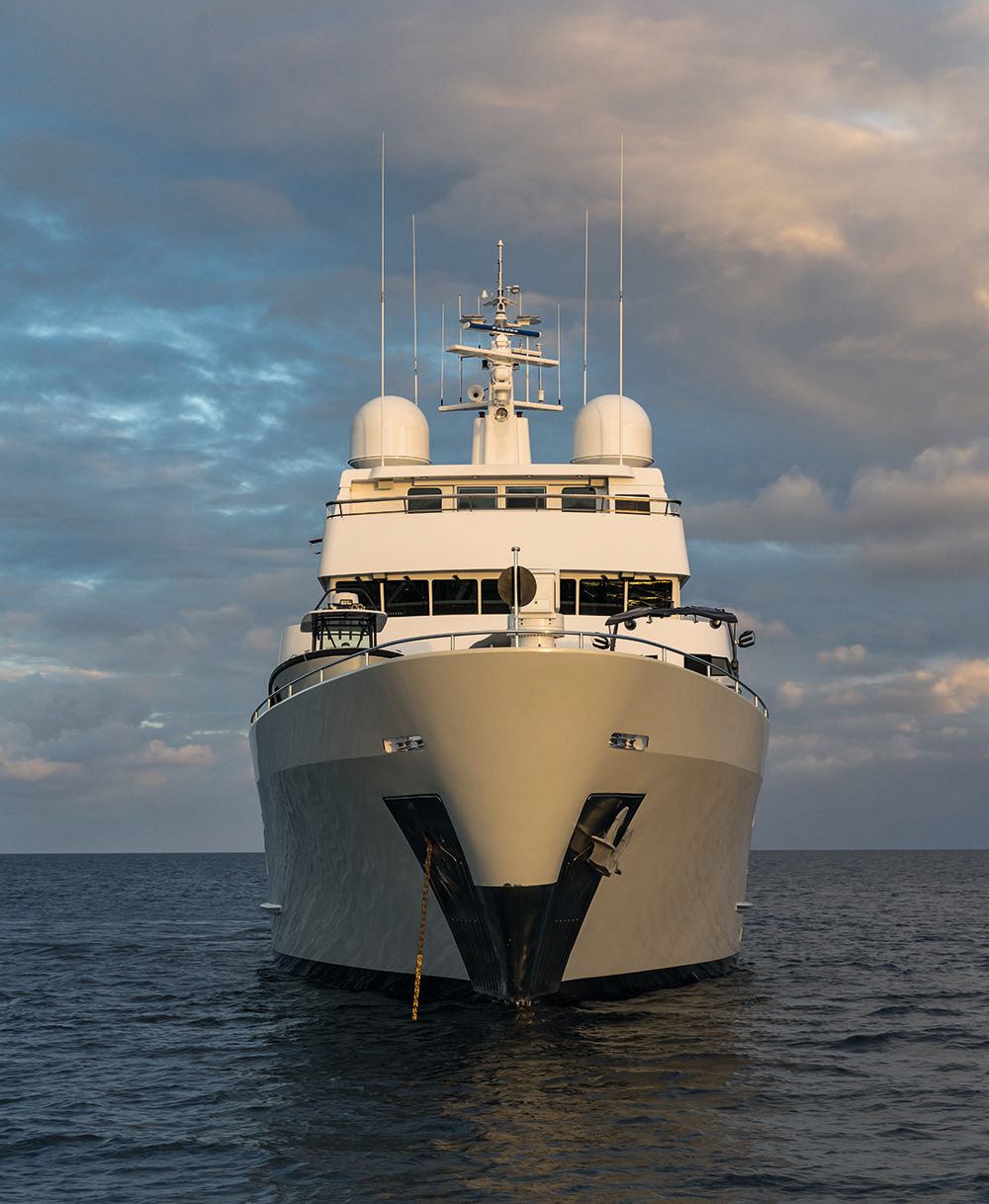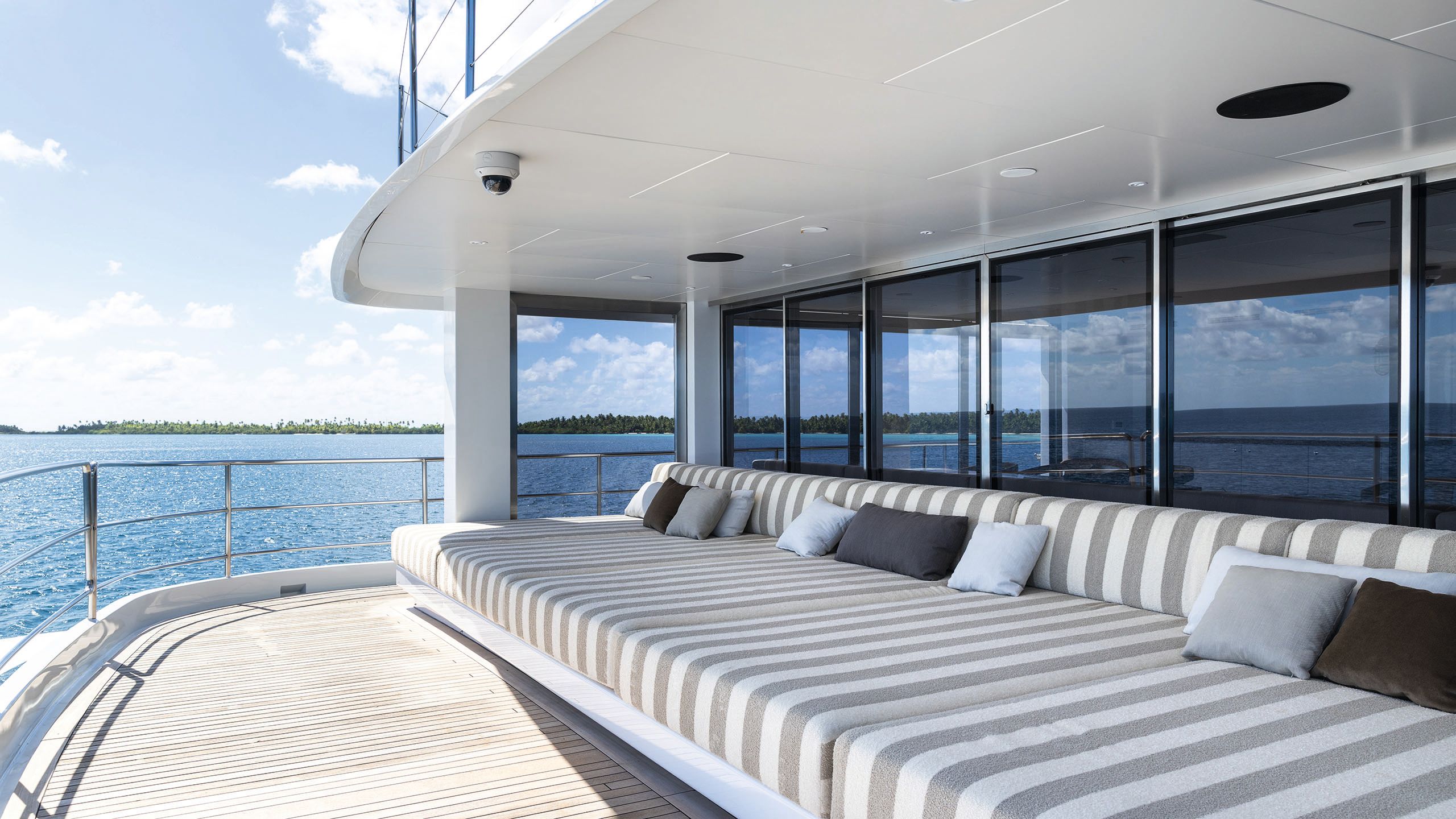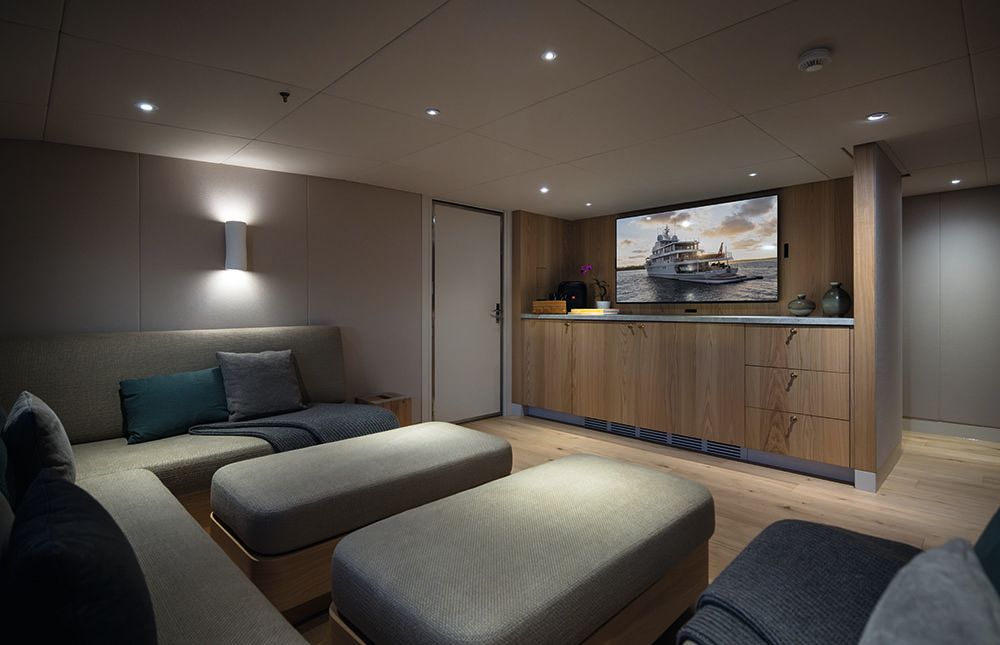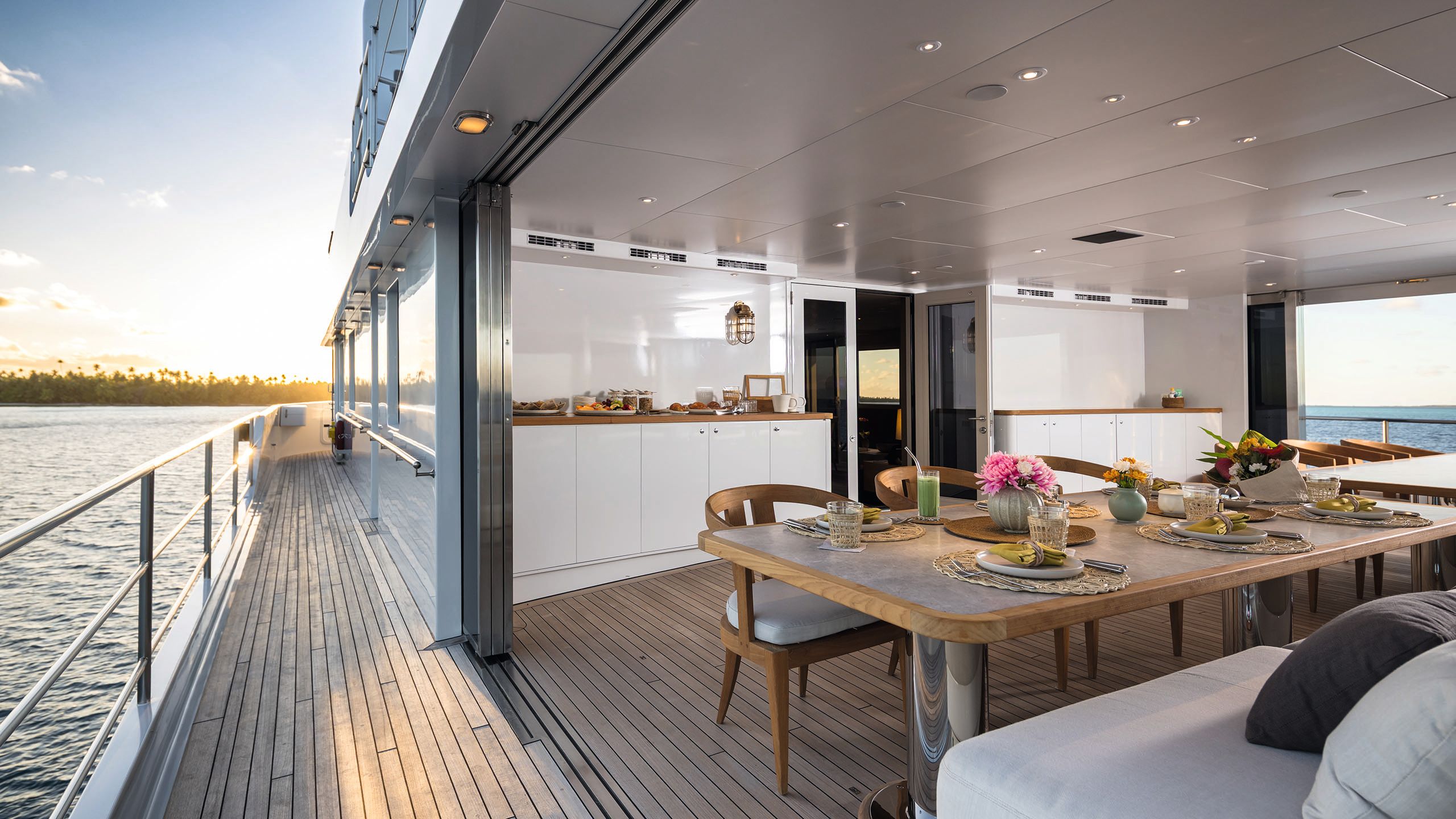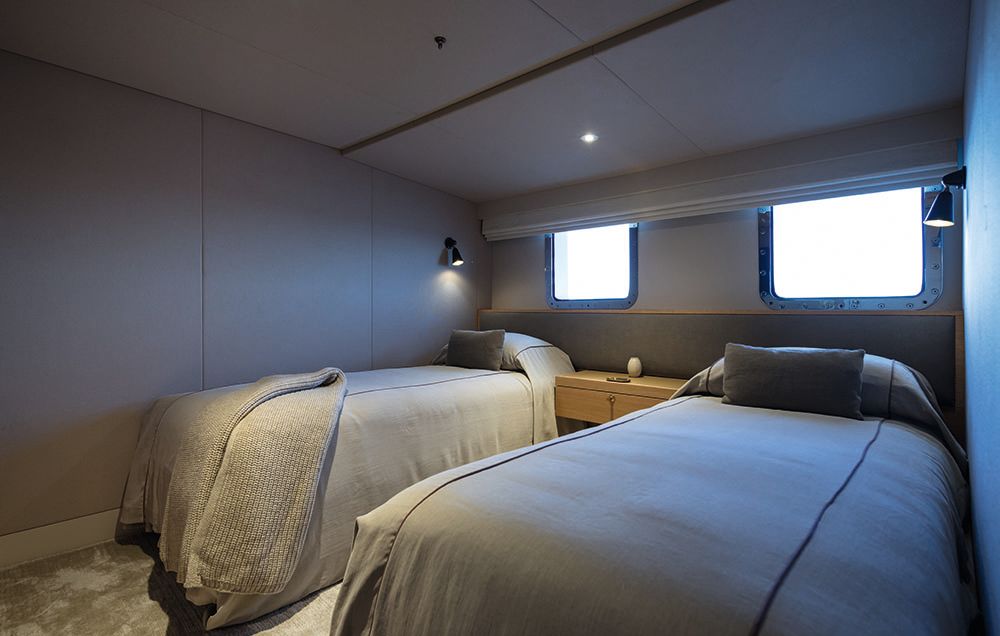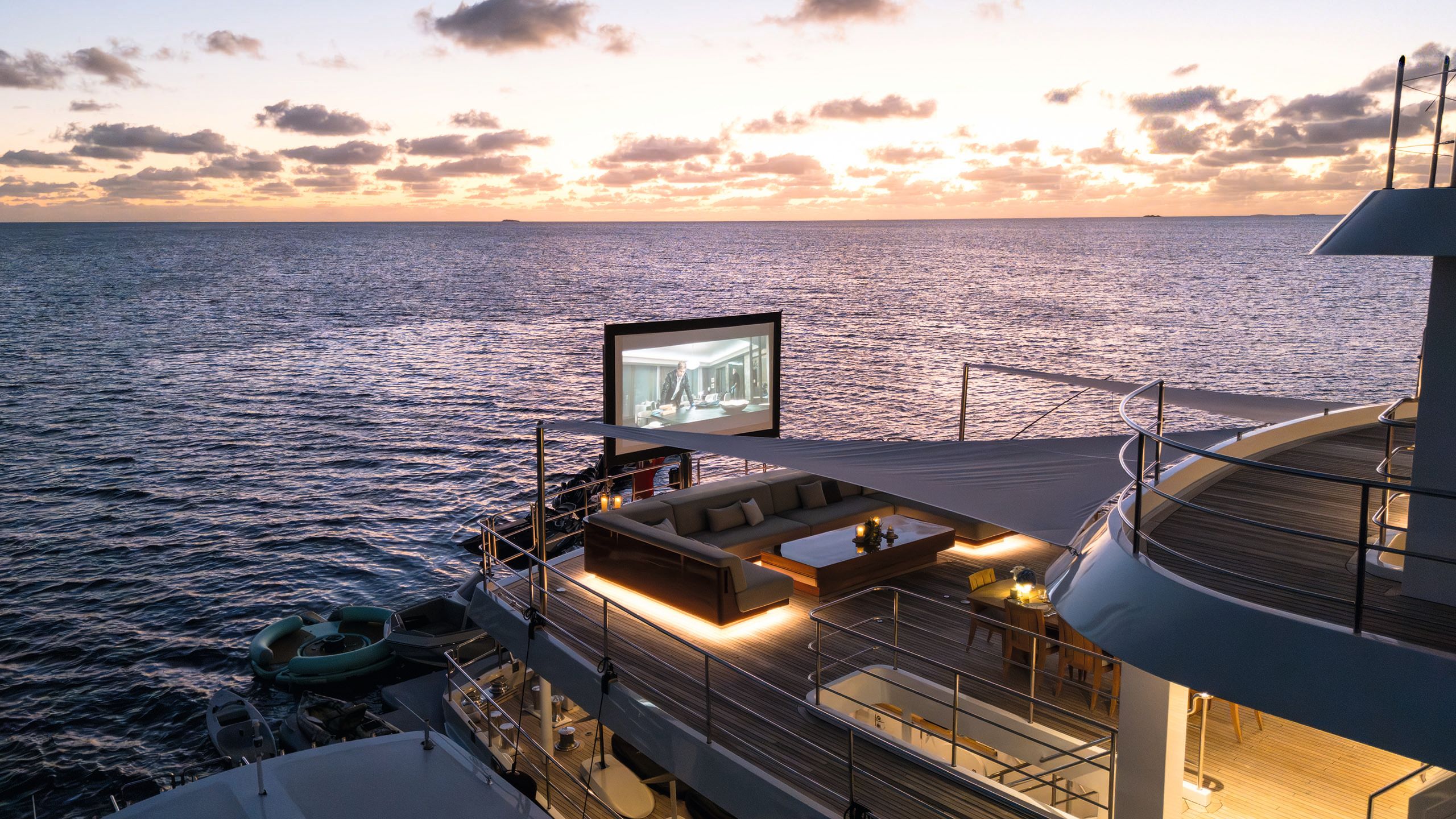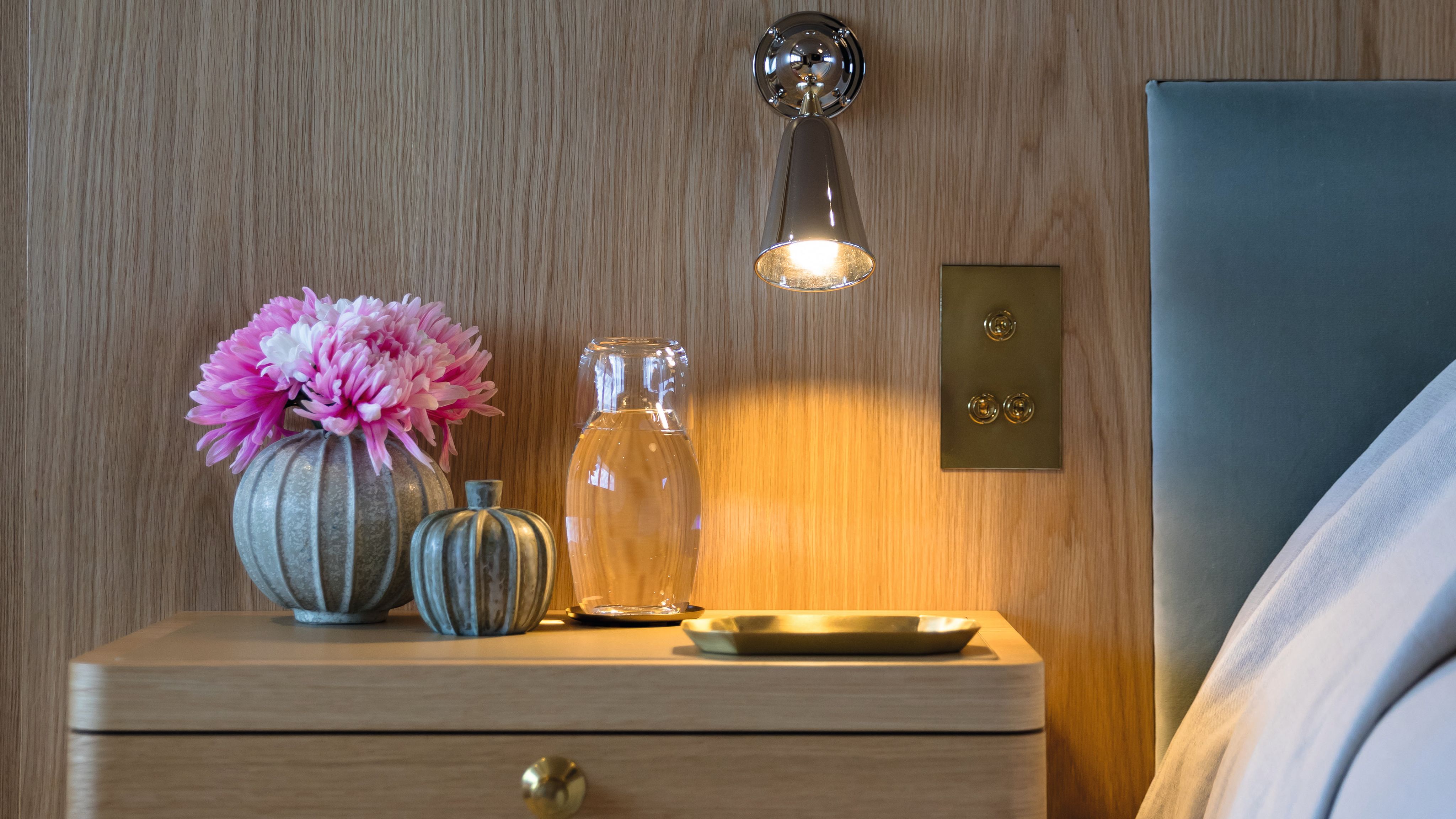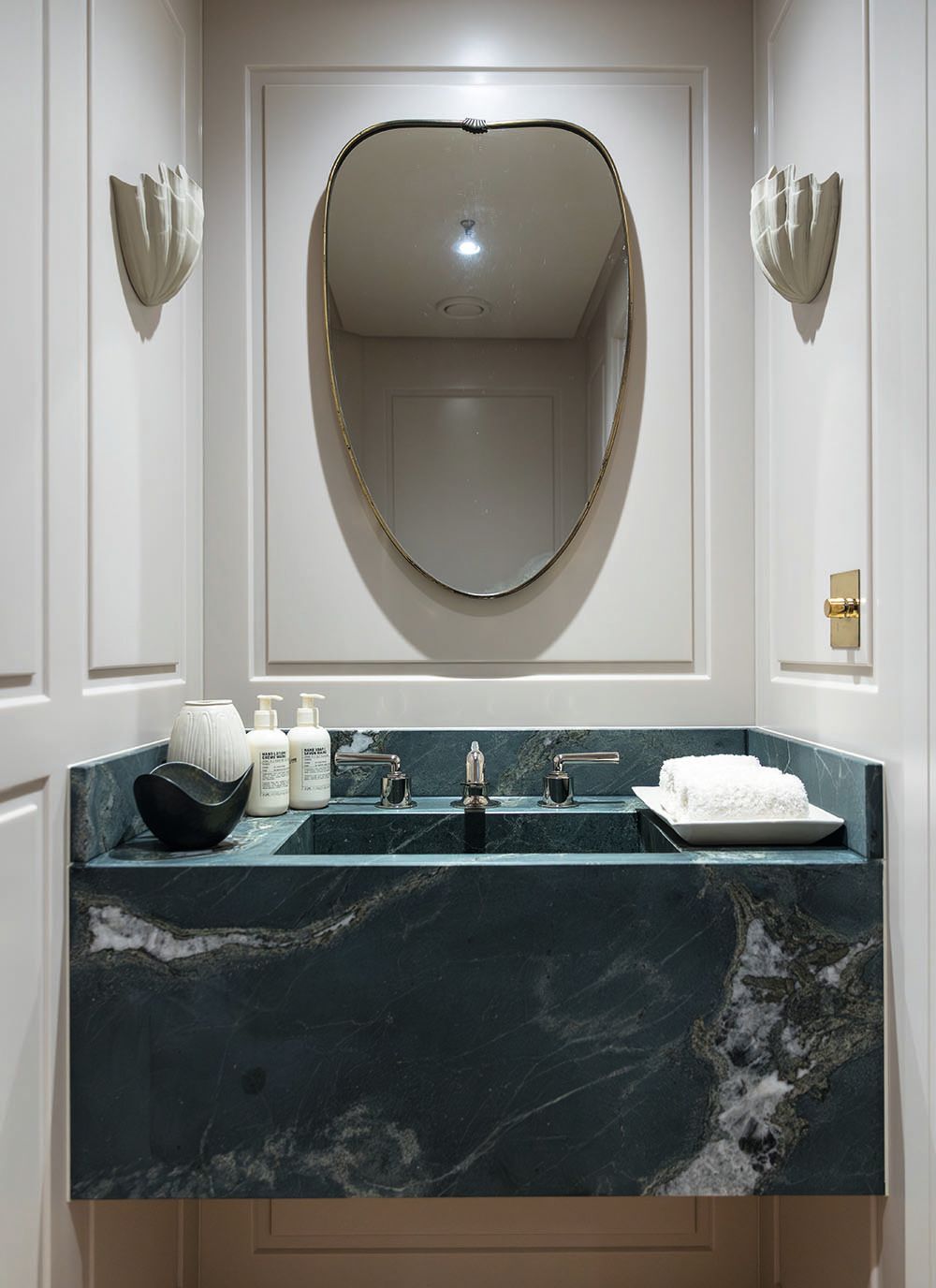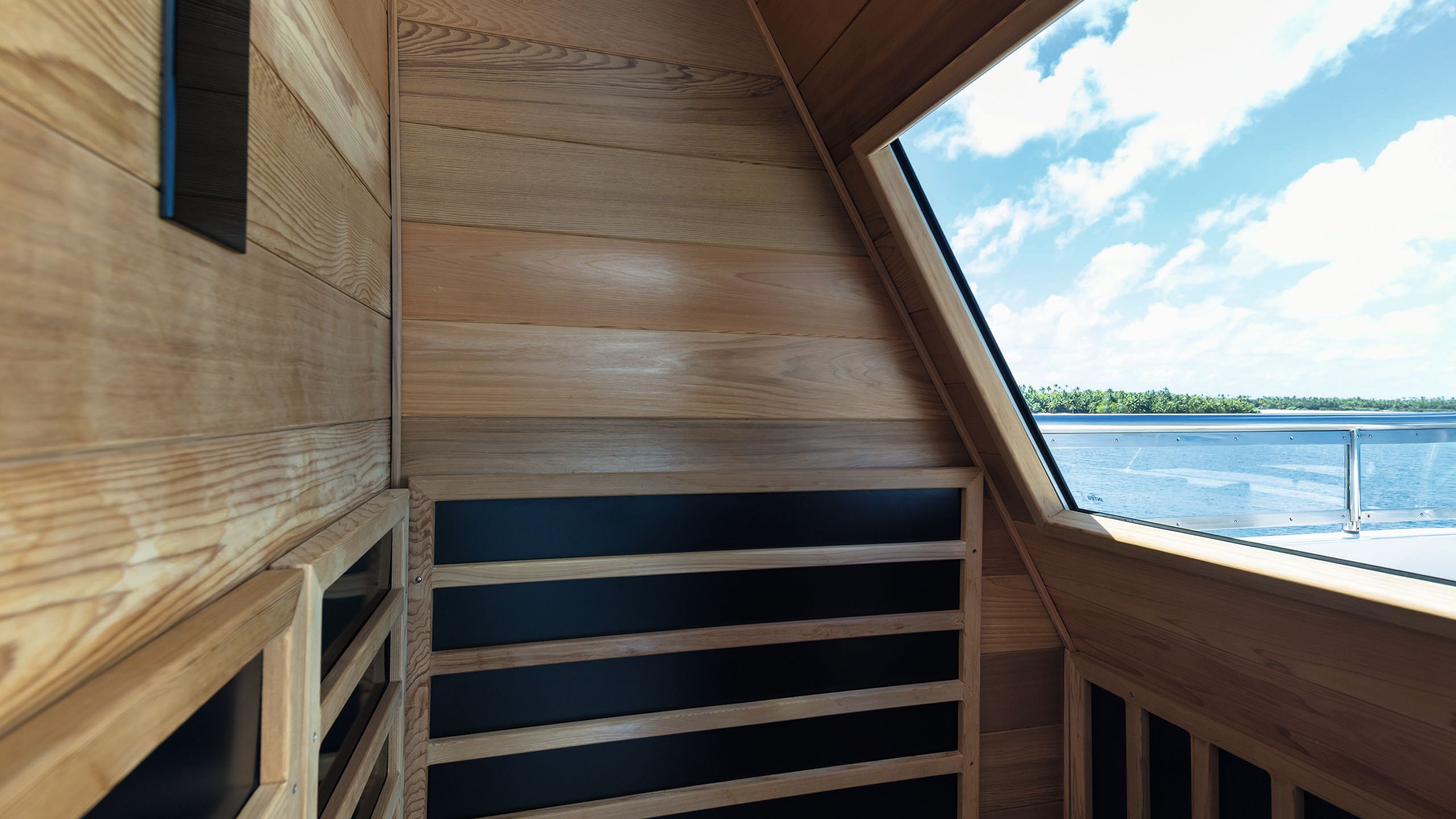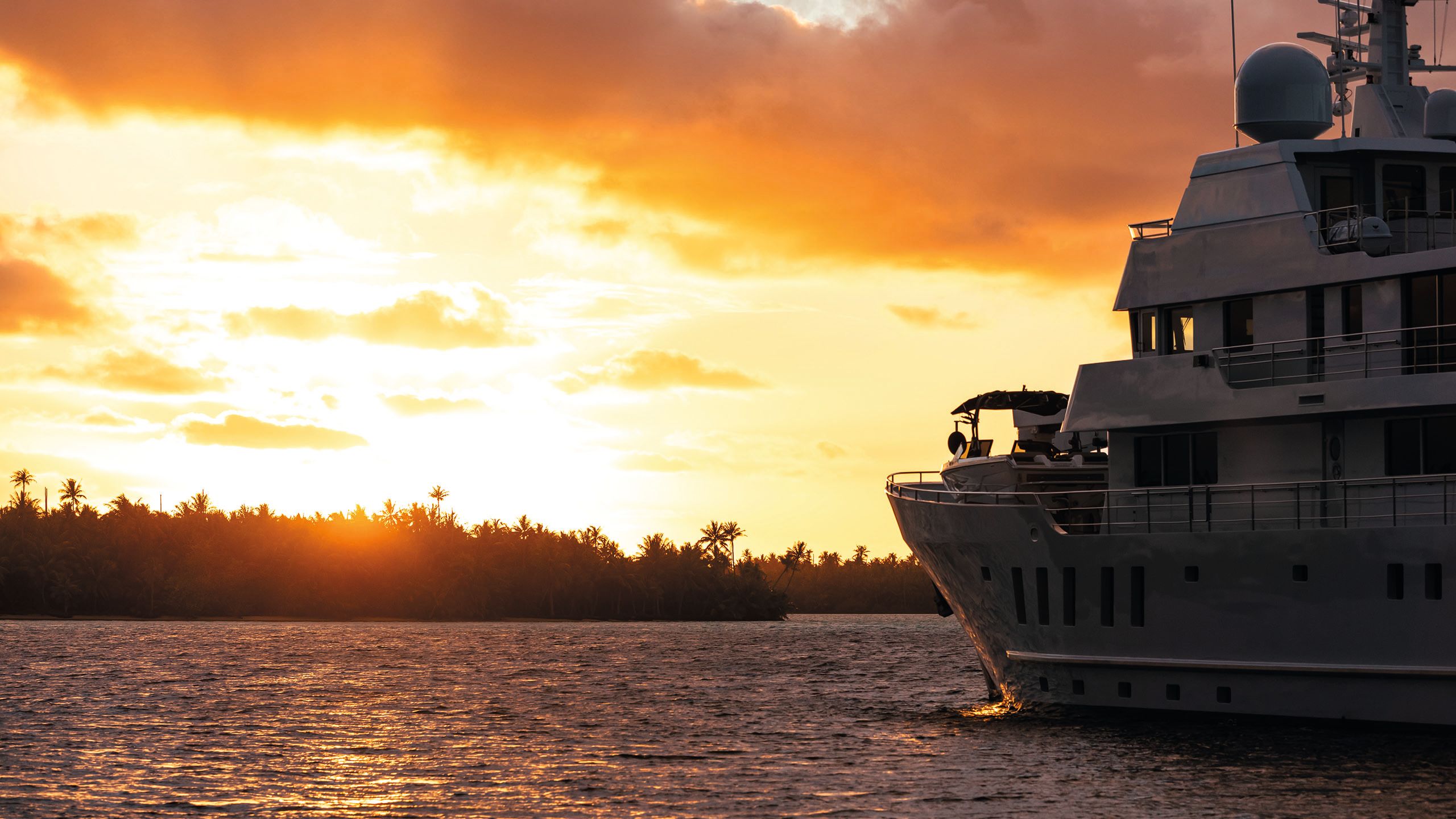GOLD RUSH
JeMaSa: the refit that gave birth to an adventure charter yacht
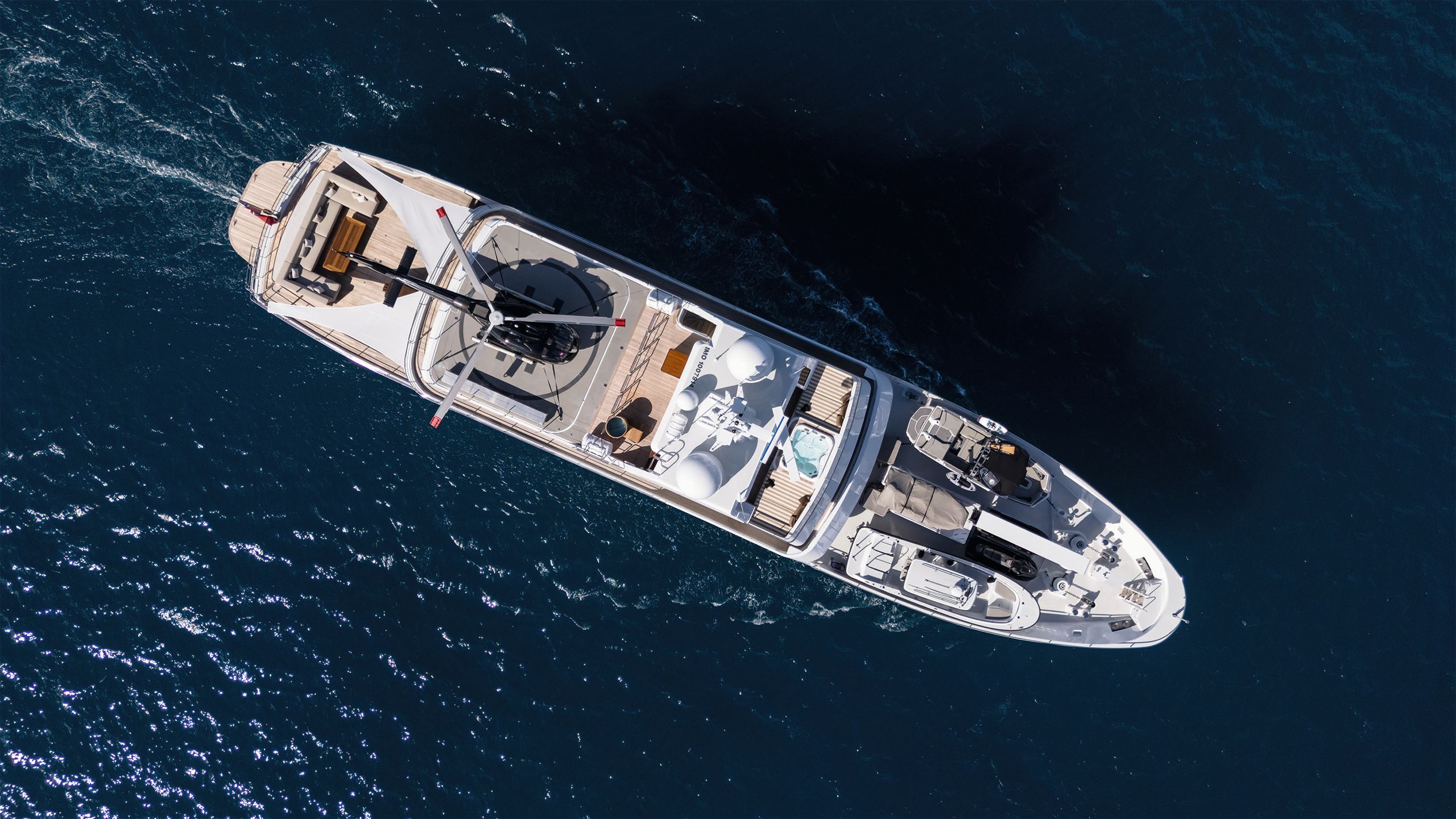
When an experienced owner opted for the speed of a refit over the wait for a new build, they threw down the gauntlet to Australia’s Gold Coast marine industry. The resulting 52-metre JeMaSa proves they chose wisely, says Charlotte Thomas
JEFF BROWN - BREED MEDIA
Destiny, serendipity, or just coincidence? We may have our own beliefs in what underlies seemingly entangled events, but when it comes to the story of 50-metre Plan B and her evolution into 52-metre JeMaSa, launched from Australia’s Gold Coast in June 2025 after a whirlwind 15-month refit, it’s hard not to feel there’s some greater force at work.
Consider the backstory. Plan B started life in 1973 as Australian naval ship HMAS Matthew Flinders, a hydrographic survey vessel. She was decommissioned in 1998, bought and repurposed as a yacht, undergoing various conversion works before being picked up in 2005 by a new owner and shipped to Atlantic Drydock in Jacksonville, US. There, she was transformed into Plan B, launching in 2007 as a sturdy, ocean-going adventure yacht that quickly racked up the world-girdling miles.
.In a 15-month refit at The Boat Works in Queensland, Australia, Plan B was brightened up inside and out and transformed into the newest JeMaSa
.In a 15-month refit at The Boat Works in Queensland, Australia, Plan B was brightened up inside and out and transformed into the newest JeMaSa
In a parallel timeline, Juan Koegelenberg was serving as the build captain of a 50-metre Hakvoort when the original owner sold it. The new owner kept Koegelenberg on, and in 2005, just as Plan B was heading into dry dock, the original JeMaSa – named after the new owner’s children – was launched.
The initial idea was for a straightforward facelift. “But that turned into taking the vessel apart. Basically, we started over - and from start to finish, we had 15 months to do it”
In 2007, as Plan B was starting her new life, JeMaSa’s owner added 63.4-metre SuRi as a support vessel. Six years and a couple of circumnavigations later, he sold JeMaSa and kept SuRi as the family yacht, also building its reputation as a top-flight adventure charter yacht.
JEFF BROWN - BREED MEDIA
JEFF BROWN - BREED MEDIA
Fast forward another decade or so, and after considering downsizing to a new build, SuRi’s owner had a change of heart – a refit would be quicker, and his broker, Will Christie of Christie Yachts, introduced him to Plan B. She was just what they were looking for: proven, sturdy and capable of cruising exactly where the owner and his family preferred to spend their time.
JEFF BROWN - BREED MEDIA JeMaSa was refit with charter in mind and, as such, carries a fleet of four tenders, including a 13.7m custom catamaran built in the Gold Coast and every conceivable water toy
JEFF BROWN - BREED MEDIA JeMaSa was refit with charter in mind and, as such, carries a fleet of four tenders, including a 13.7m custom catamaran built in the Gold Coast and every conceivable water toy
“After he parted with SuRi, we were going to build a catamaran in Australia, but to save time he decided instead to go down the refit route,” begins Koegelenberg.
JEFF BROWN - BREED MEDIA
JEFF BROWN - BREED MEDIA
“We flew out to see Plan B and I was impressed; the steel hull was in extremely good condition and she had been well maintained, and that meant she was a good platform. The owner and his family like cruising more remote regions. We always try to search for really good dive areas and remote beaches where people can just have a great holiday and not be seen, and this vessel was the perfect canvas for that.”
The main deck aft was redesigned to allow guests to fully walk around its perimeter. Built-in sun loungers on the upper deck (below) face the sea views aft. Just forward is a winter garden that hosts the main dining area
Plan B’s dark exterior paint scheme matched a relatively dark interior, and the initial idea was for a straightforward facelift. “The plan was to get a painter into the interior and make it light, put in new carpets and soft furnishings, and get the boat out ASAP,” says Koegelenberg. “But that turned into taking the vessel apart – stripping her back to bare metal in all the guest areas, saloons and cabins. Basically, we started over – and from start to finish, we had 15 months to do it.”
The refit was undertaken in-water at Gold Coast City Marina and The Boat Works on Australia’s east coast, south of Brisbane. The Boat Works had recently unveiled covered superyacht berths that meant interior and exterior works could continue in all weather, and the concentration of trades in the Gold Coast marine precinct meant every facet of the refit could be supported by local contractors.
JEFF BROWN - BREED MEDIA
JEFF BROWN - BREED MEDIA
Indeed, as the project ballooned in scale, so the number of contractors expanded to include, as Keogelenberg jokes, nearly every company in the region. Such was the pressure of time and extent of the refit that Koegelenberg engaged not one but three interior contractors, with each getting a deck to focus on – Workshop 28 was given the lower deck, Wright Marine the main deck and Asone Super Yachts the top deck with the gym.
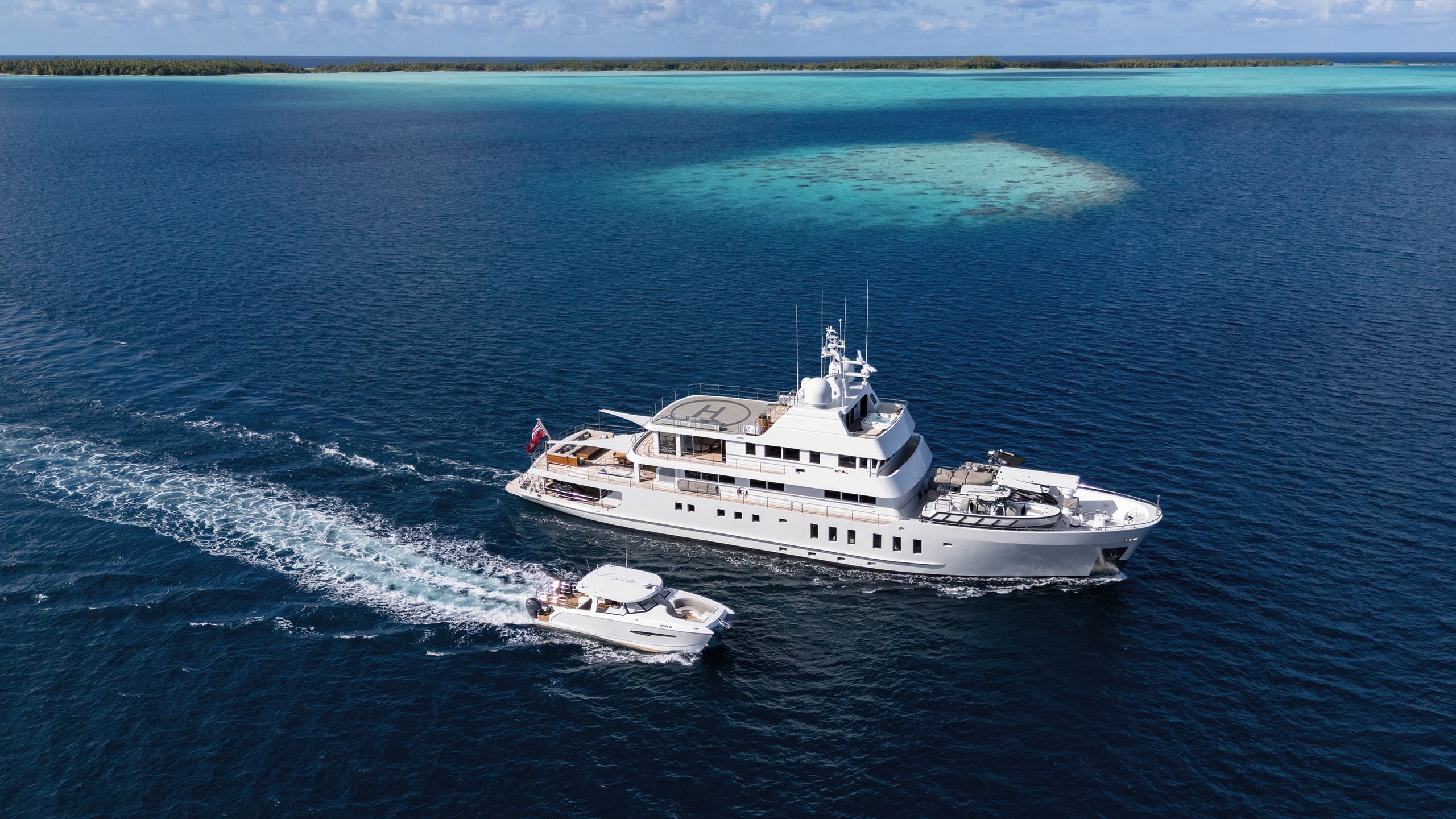
“We flew out to see Plan B and I was impressed; the steel hull was in extremely good condition and she had been well maintained, and that meant she was a good platform”
To ensure consistency, Koegelenberg’s own company, Liquid Yacht Support, ordered all materials that would be used, including woods, veneers and stone, in one batch. He also brought in a team to repaint interior areas and the hull and superstructure, and supplied the scaffolding for the project through his company Marine Scaffolding. Timber Tides was brought in to handle the replacement of teak decking and other aspects.
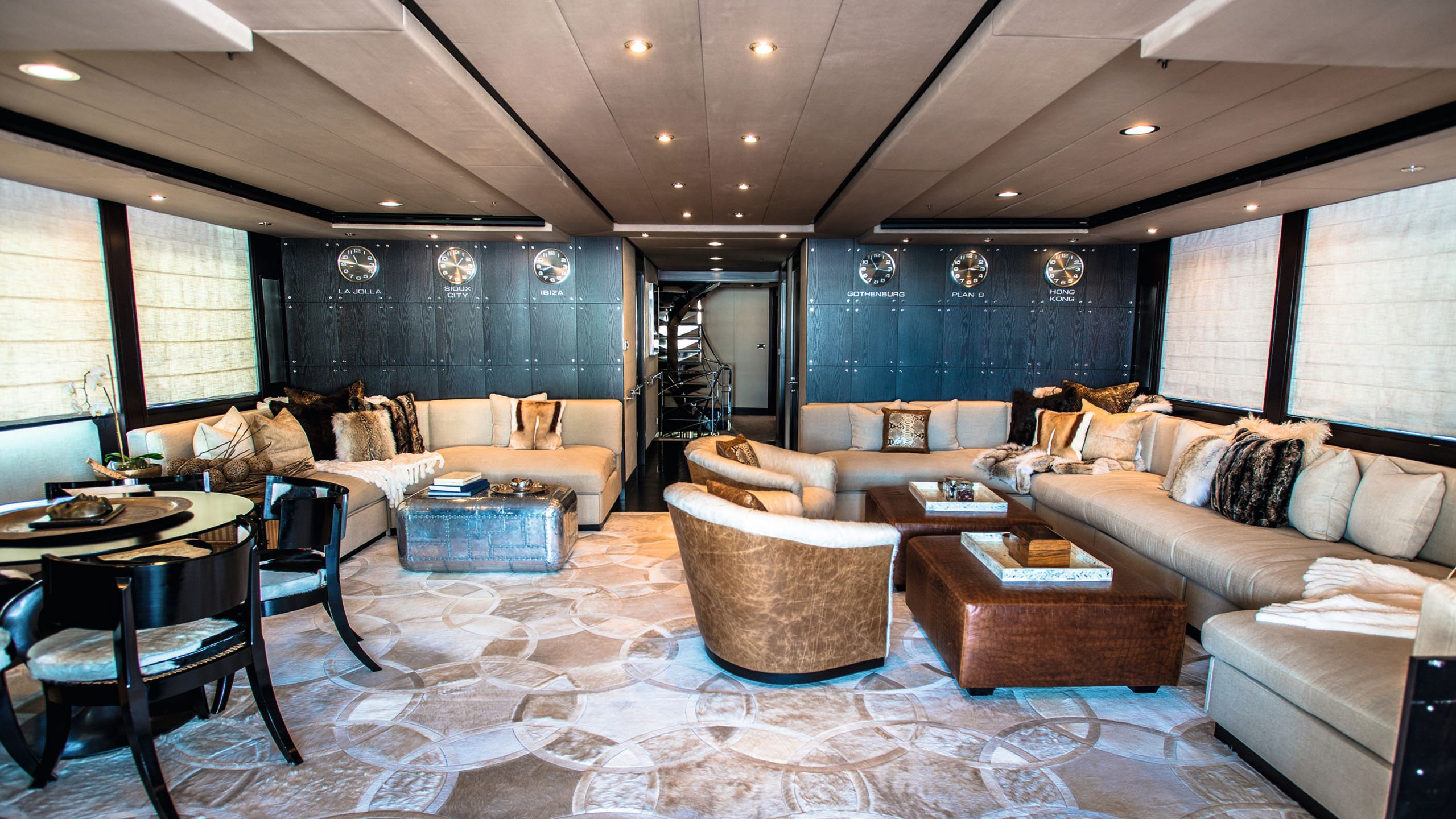
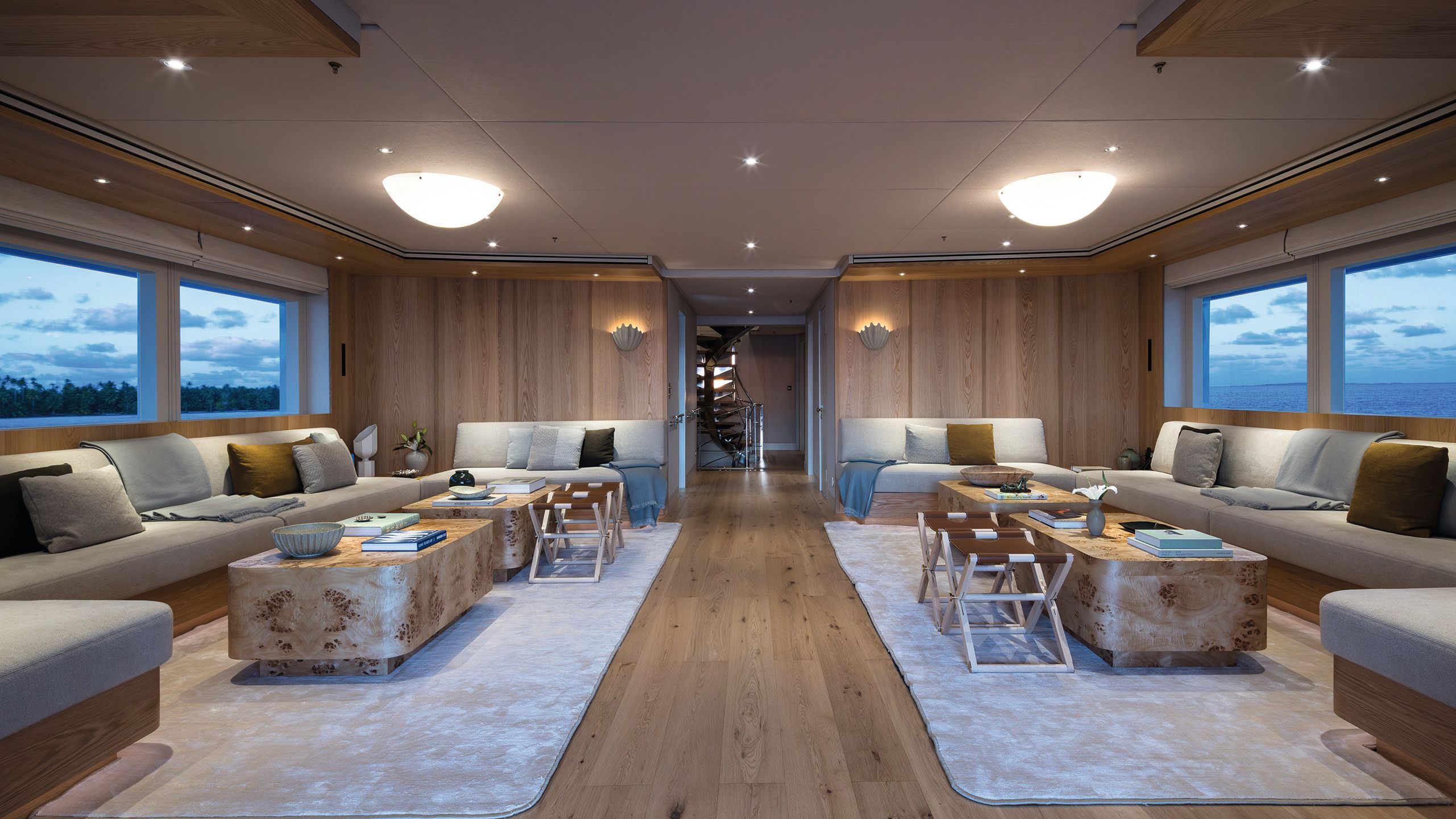
The main saloon pre-refit, and after. It now features a warm palette of American oak punctuated with design pieces sourced by the owner’s daughter, such as the Rose Uniacke clamshell sconces
The yacht arrived at The Boat Works in March 2024 and work began in earnest that April. With the interior stripped, South Pacific Marine began to replace all the electrical cabling, with Tri-State Marine installing all-new IT and audio and visual networks.
Another local company, Lumark, was brought in to handle stainless-steel work, including the frames for new sliding doors and windows and the build of the “glass house” – an inside-outside winter garden on the upper deck that now serves as the main dining area on board.
Interior and exterior design fell to Australian designer Misha Merzliakov, whose previous work with the owner on SuRi and longstanding relationship with Koegelenberg and naval architect Shaun Phelps of Periscope Naval Architects, made him a natural choice for the project.
JEFF BROWN - BREED MEDIA
JEFF BROWN - BREED MEDIA
While Merzliakov tackled the challenges of a 50-year-old naval vessel and its various quirks – including marked camber in the lower deck running outboard from the centreline – he also translated the owners’ wishlists for materials and general look while working with one of the owners’ daughters, herself a fashion designer who also had a hand in the family’s previous yachts.
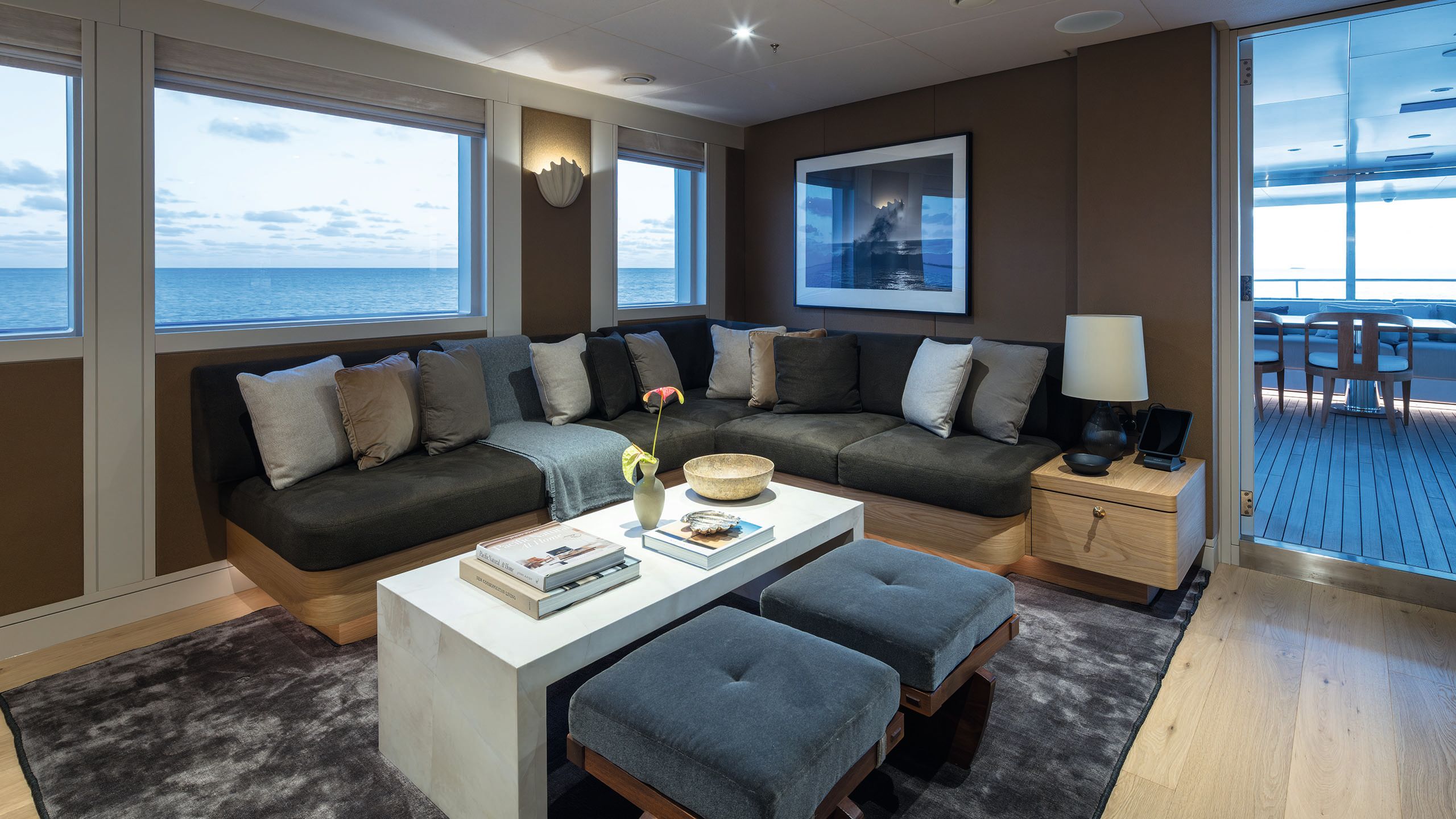
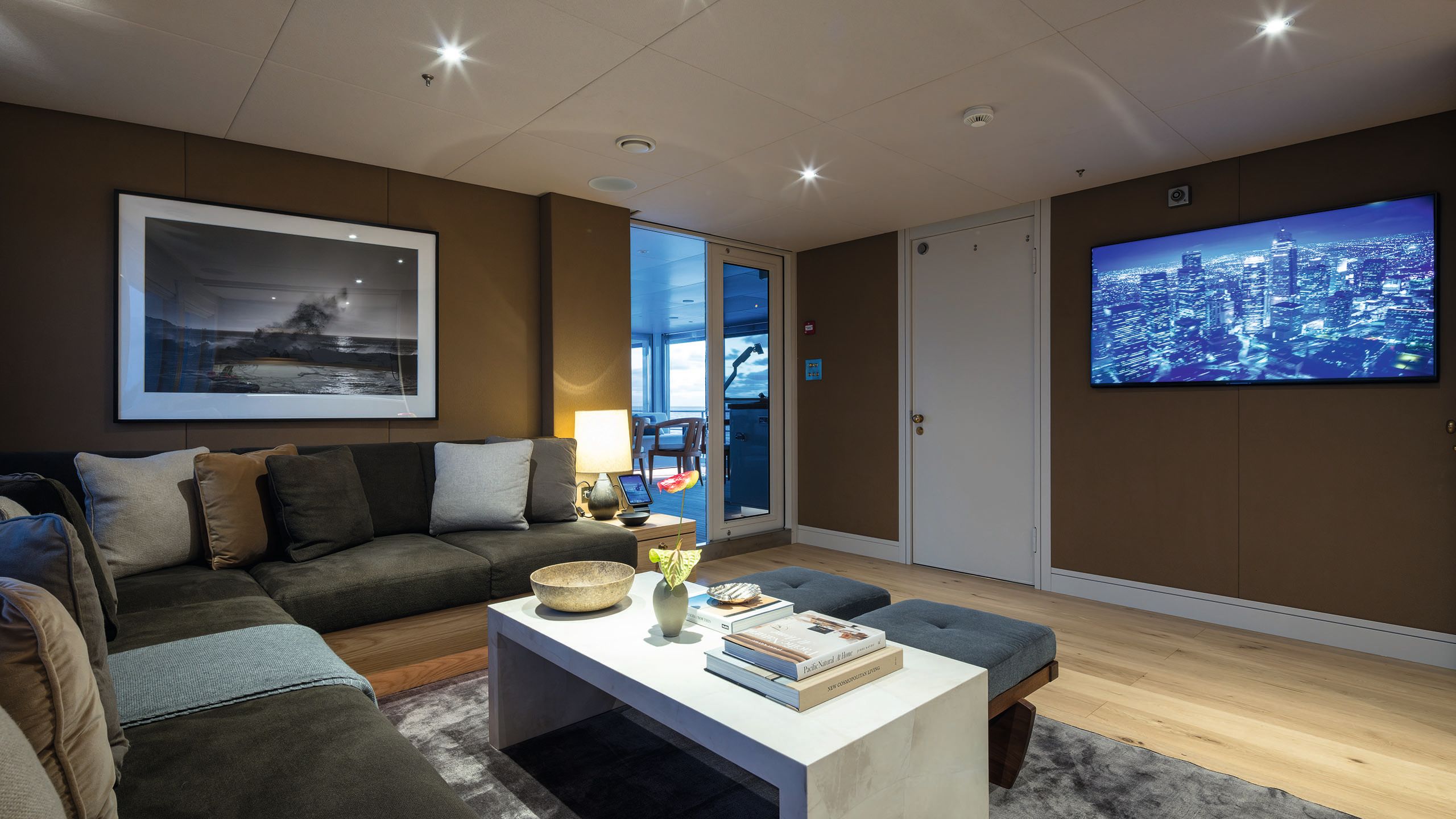
“There were no drawings of the original vessel,” Merzliakov says. “The yacht has cambered floors and ceilings, and they’re not parallel cambers. We overcame that by 3D-scanning the entire yacht, modelling it and using that as the basis for the design work.
The preponderance of warm oak is a counterpoint to owner-centric design cues
Being an old naval vessel also meant there wasn’t a lot of space in the deckheads for flourishes. I had to pick the smallest, shallowest light fittings I could while still achieving beautiful lighting design, because poor lighting would undo all of the interior design work.”
JEFF BROWN - BREED MEDIA
JEFF BROWN - BREED MEDIA
Shaun Phelps concentrated on aspects of naval architecture, including the addition of vista windows in the hull for the lower-deck VIP cabins and work to improve the vessel’s damage stability.
JEFF BROWN - BREED MEDIATwo new children’s cabins were added aft, each with convertible twin to king berths
JEFF BROWN - BREED MEDIATwo new children’s cabins were added aft, each with convertible twin to king berths
“The stability work was a really interesting aspect of the job,” Phelps says. “We added a new bulkhead and sliding watertight door into the crew compartment to restrict flooding in the case of damage. Adding a watertight boundary in the hull comes with a huge array of challenges as there are numerous engineering services and electrical cables that cannot be simply built around or cut. Not to mention getting a fully assembled one-tonne door into the hull!”
The owner’s cabin was rearranged with the bed placed on the forward bulkhead for better views out the windows. Calacatta Caldia marble adorns the en suites
Although there were no internal structural changes except for a new children’s zone on the lower deck, JeMaSa feels very different to Plan B, and the new vertical hull windows have transformed the VIPs. “I wanted to have sightlines from the beds, so you could lie in bed and see out if you were somewhere cool,” Merzliakov says. “Also, they always say light is everything in architecture; the impact of those new windows is profound.”
The bedrooms before the refit
On the main deck, Merzliakov switched the position of the bed in the owner’s cabin to the forward bulkhead so it offered panoramic views out of the windows. Aft, the fixed U-shaped settee in the cockpit has been reconfigured as a walkaround unit. “For charter and for functions you should be able to walk right around the deck,” Merzliakov says, “especially when you have events and fireworks and music, so there’s a lot more scope for people to enjoy the deck with this configuration.”
JEFF BROWN - BREED MEDIA
JEFF BROWN - BREED MEDIA
The upper deck’s main change is the addition of the glass house – an enclosable, climate-controlled space that serves as the main dining area. “They had something similar on SuRi, and they enjoyed the relaxed nature of the arrangement,” says Merzliakov. “They like above deck dining, and it’s a very adaptable space. It also has the best view on the yacht.”
“It was a big project for the Gold Coast... everybody wanted to see a success and everybody played their part”
Throughout the interior, the preponderance of warm oak is a counterpoint to the owner-centric design cues in pops of colour and custom pieces here and there, while retaining a neutral canvas that will appeal to a broad swathe of charter clients.
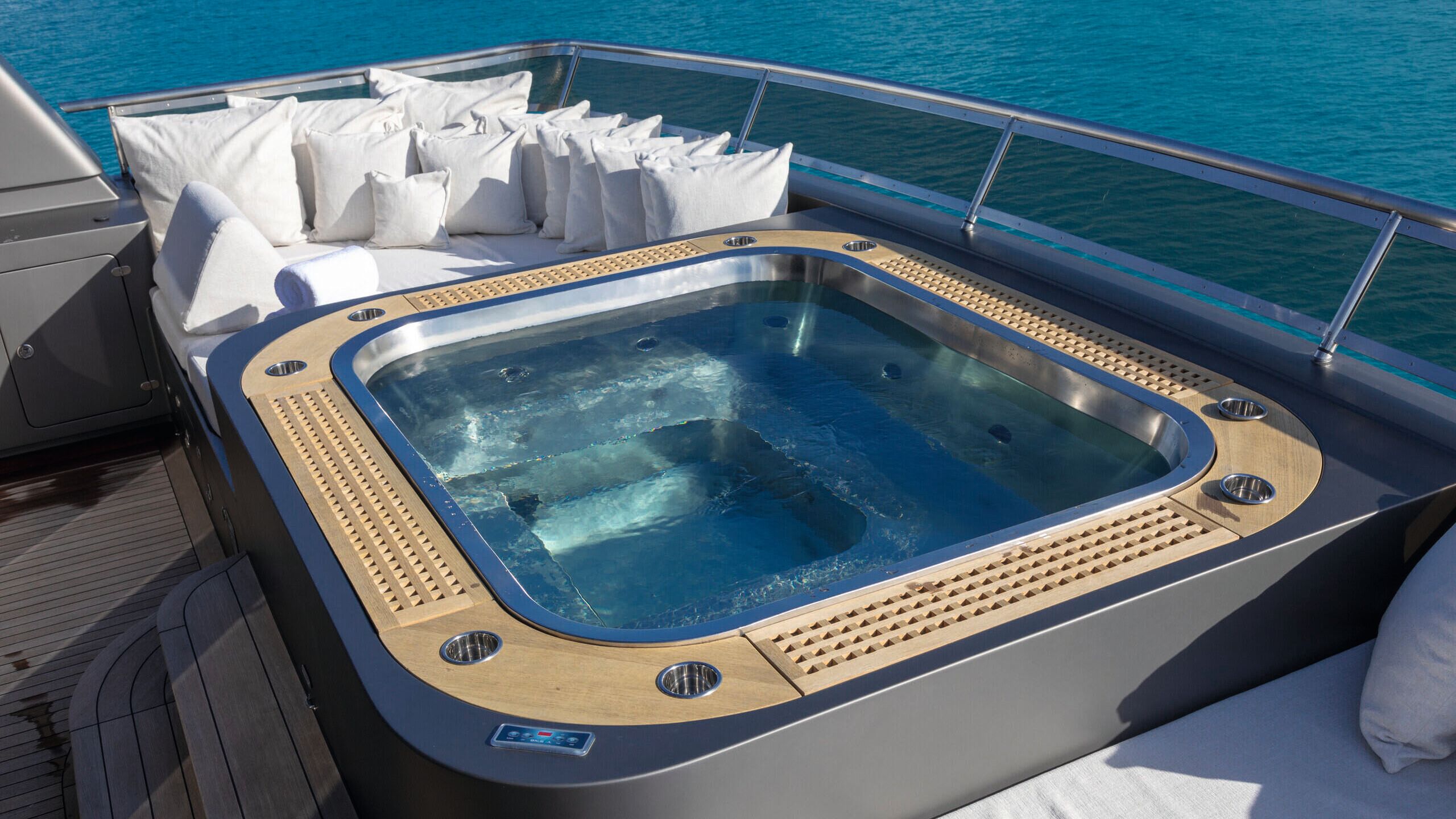
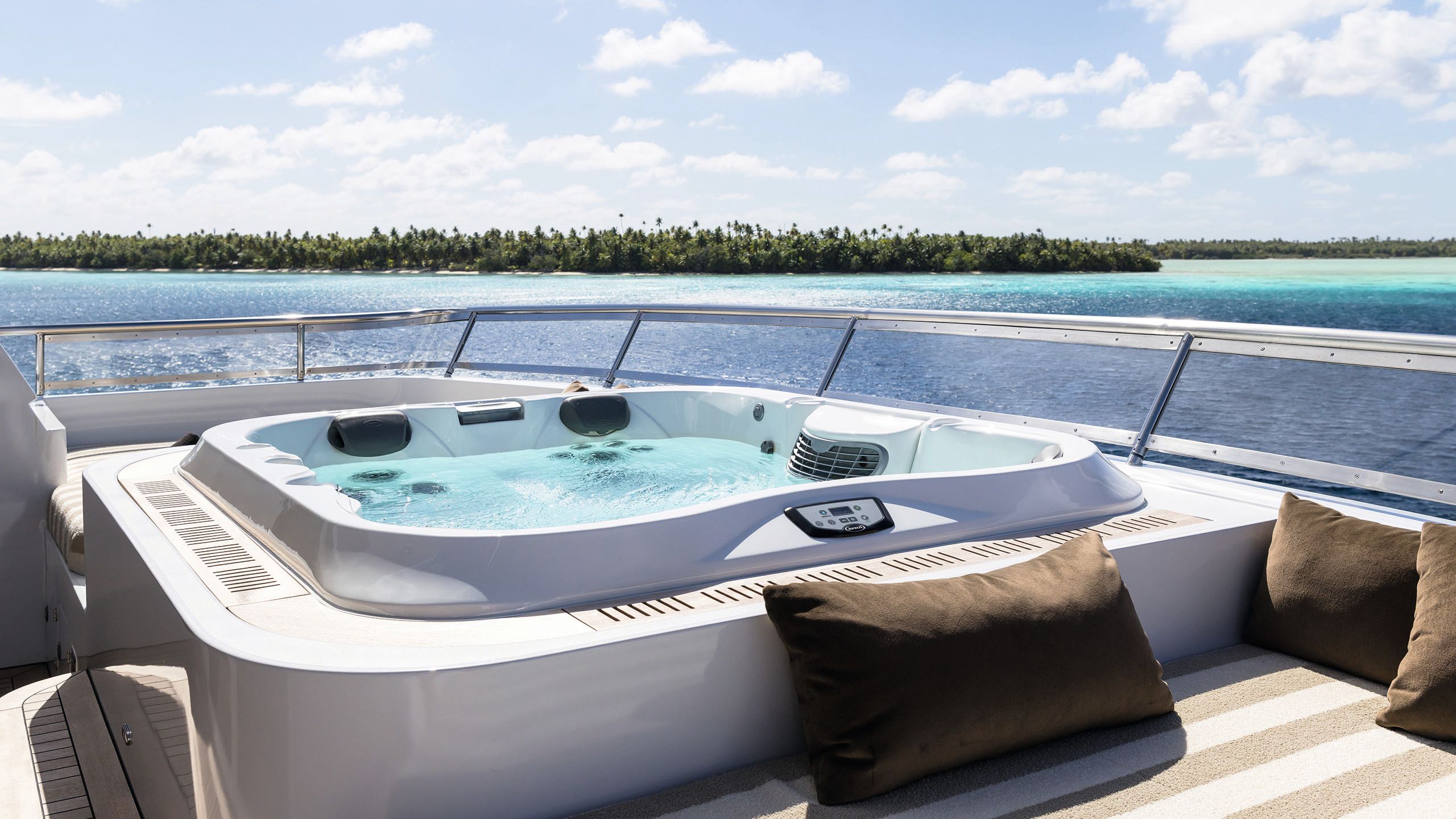
IMAGE CREDITS
IMAGE CREDITS
JEFF BROWN - BREED MEDIA
JEFF BROWN - BREED MEDIA
The spa pool before and after the re-fit
That’s not to say there aren’t delightful touches scattered throughout – the owner’s daughter selected a number of interior style treats, such as Van Cronenburg door furniture, and sublime Rose Uniacke clamshell sconces, which were enough to give the installing electricians heart palpitations. However, the interior design wasn’t always straightforward.
“The owners wanted to have generous amounts of timber finishing throughout in the form of open grain American oak with a matt finish – honest and pure, but challenging in large doses,” says Merzliakov. “I had a unique problem of trying to keep continuity in the finishes across a 750GT yacht, with the risk being that the timber evolves in colour and tone as you progress through the interior.”
JEFF BROWN - BREED MEDIA
JEFF BROWN - BREED MEDIA
To address this, Merzliakov selected the veneers for the whole project and then devised a way to press the veneer to the substrate in random order but with a repeatable system to achieve continuity of colour and tone. “I lost count how long that took,” he says. “It meant multiple visits, and hours and hours at a time.”
JEFF BROWN - BREED MEDIA
JEFF BROWN - BREED MEDIA
For the en suites, after much discussion the owners settled on Calacatta Caldia marble, chosen for its soft grey veining. To save weight, everything but the countertops is formed using a 6mm marble veneer on a foam substrate, with the quarry in Italy cutting the stone, compositing it on site and shipping it to Australia, where a local stone mason cut it to fit. “That was an interesting task in itself,” Merzliakov remembers. “It’s an old boat and nothing is straight, so it was another little challenge to overcome during install.”
JEFF BROWN - BREED MEDIA
JEFF BROWN - BREED MEDIA
For Koegelenberg, the biggest part of the project was controlling all the contractors. With such a tight timeframe and such extensive works, the usual process of moving through quotations to contracts wasn’t possible. Instead, the project was run on a time-and-materials basis.
There’s no question, however, that it has been a huge success and also an advertisement for the capabilities of the Australian superyacht industry. “It was a big project for the Gold Coast,” Koegelenberg confirms. “Everybody’s names have been on it, everybody wanted to see a success out of it and everybody played their part.
“The owner,” he says, “is over the moon, both impressed and happy with the result and the amount of work done in a short time. We’re back in the water and starting to grow a reputation again. Hopefully we’ll make another successful charter vessel that’s a bit off the beaten track.” After her maiden season in the South Pacific, will likely head to Papua New Guinea early in 2026, Koegelenberg says.
JEFF BROWN - BREED MEDIA
JEFF BROWN - BREED MEDIA
“I’ve done a couple of charters on SuRi there and found some really good areas, so we’re going to explore in more depth,” he confirms. “The owners are really interested in returning there, then there’s some talk of going into the Indian Ocean; Madagascar is on the bucket list, but we’ll see. We’ll keep on exploring.”
She’s certainly the perfect platform for that, and fortunately you don’t need destiny, serendipity or coincidence to enjoy JeMaSa in all her refitted glory. It turns out a charter will do just fine.
First published in the November 2025 issue of BOAT International. Get this magazine sent straight to your door, or subscribe and never miss an issue.
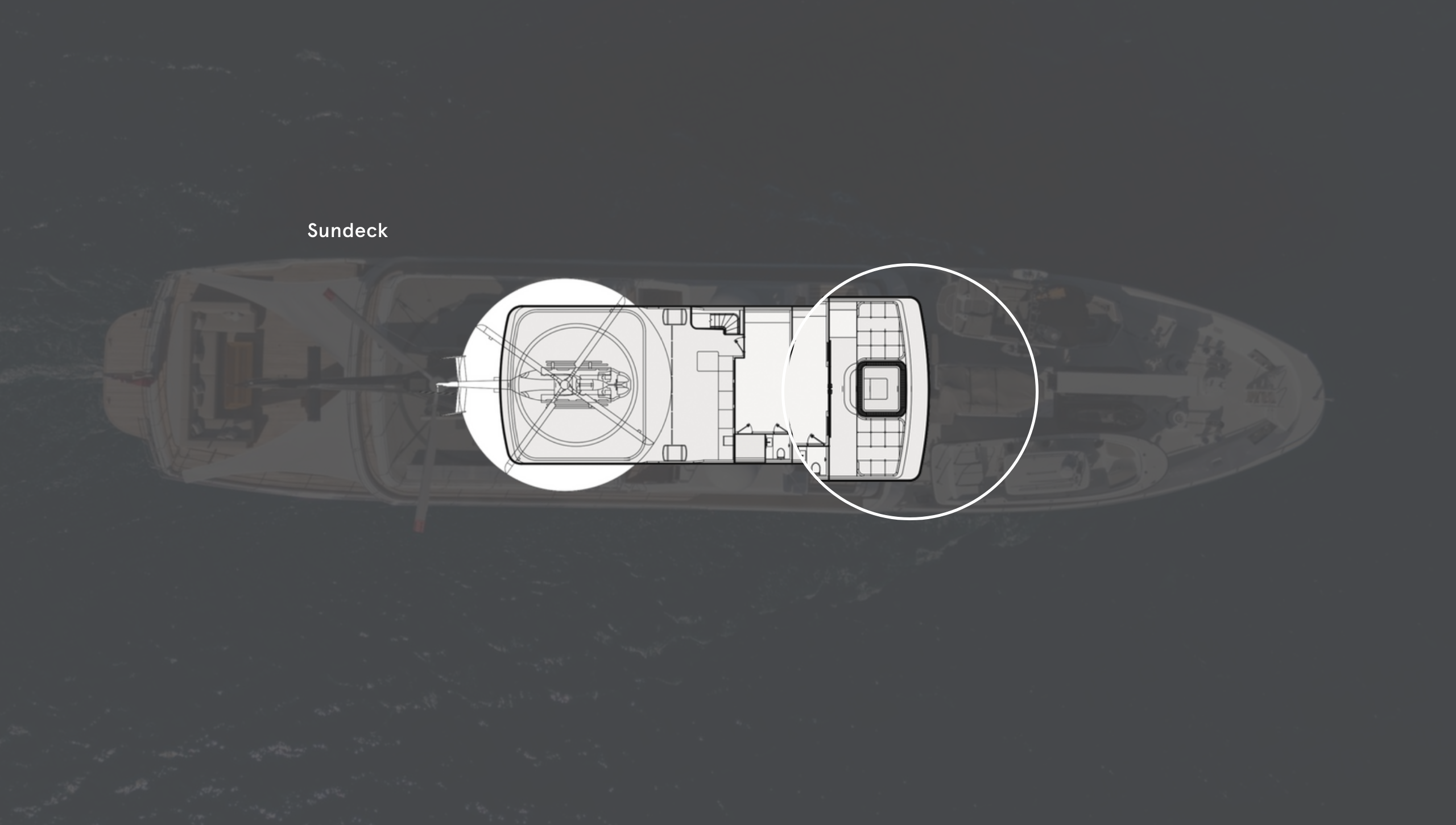
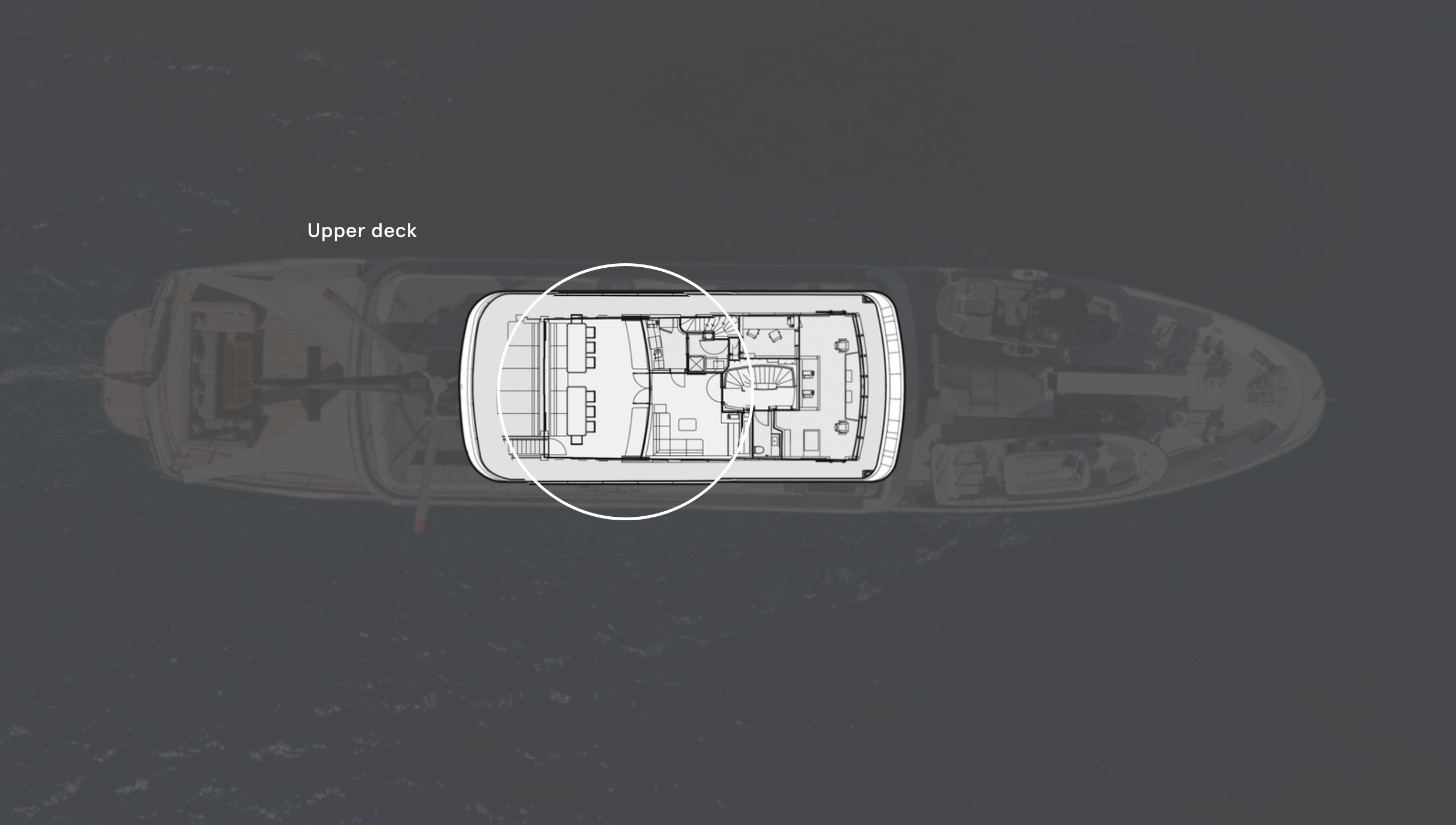
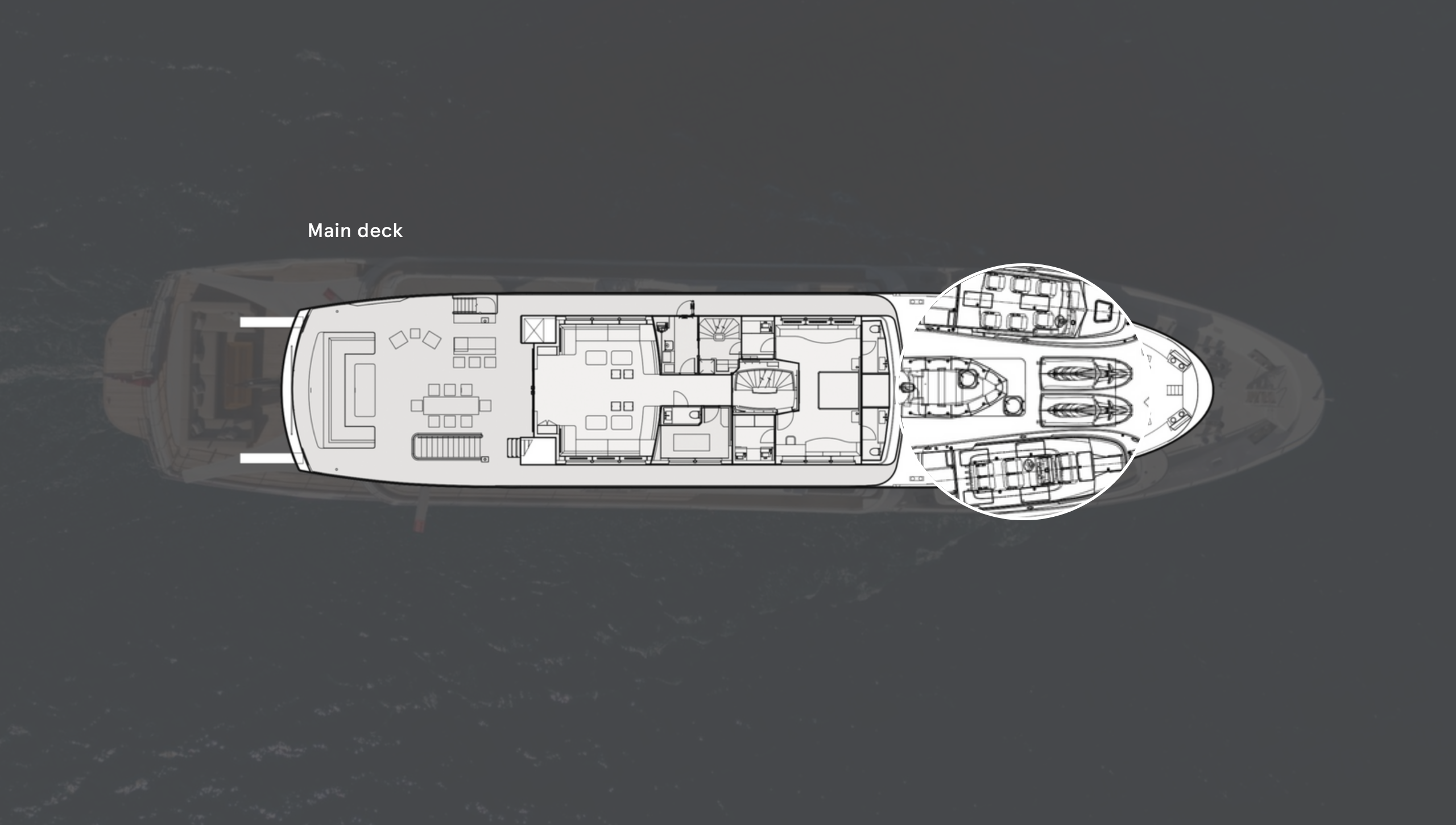
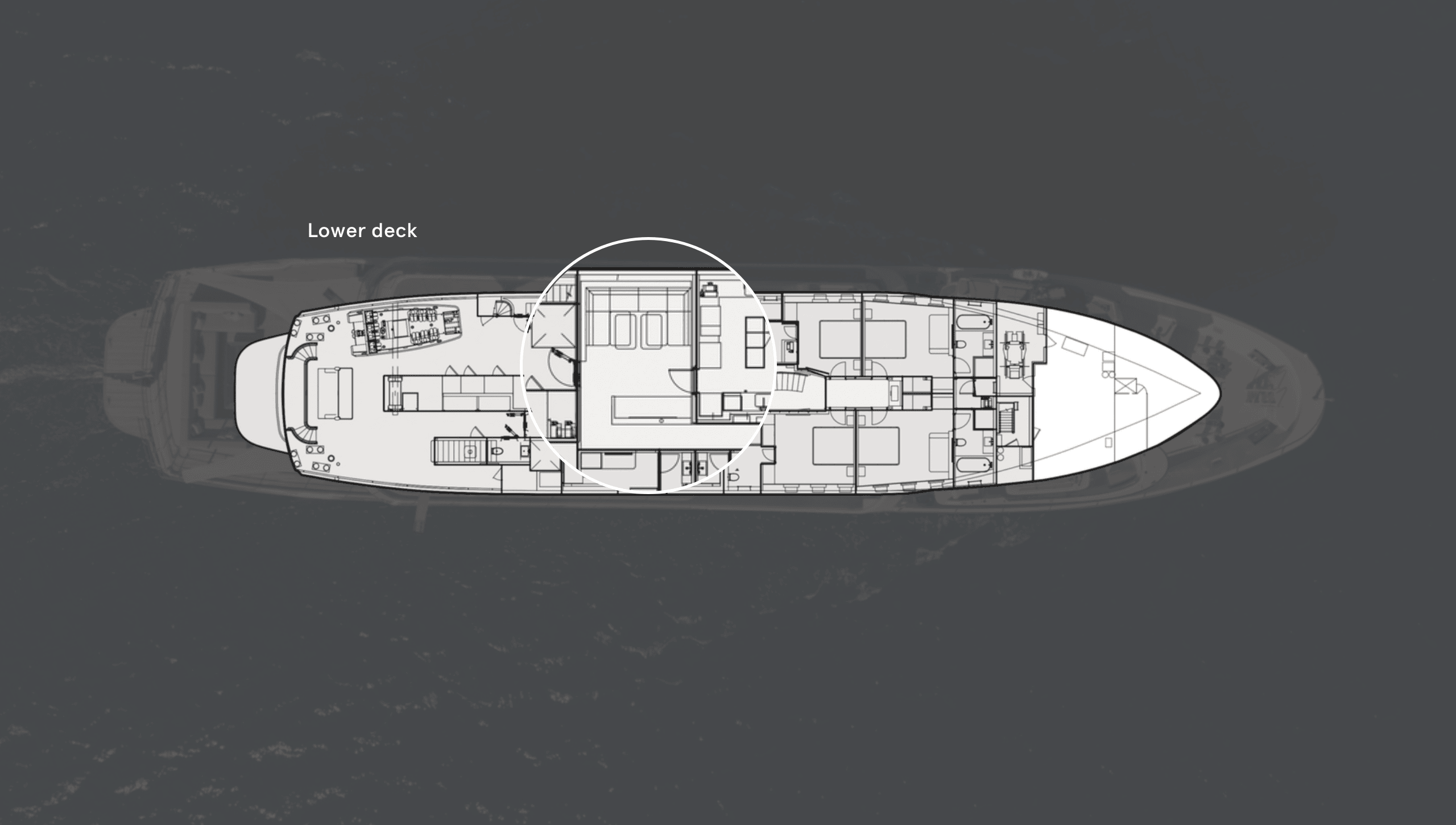
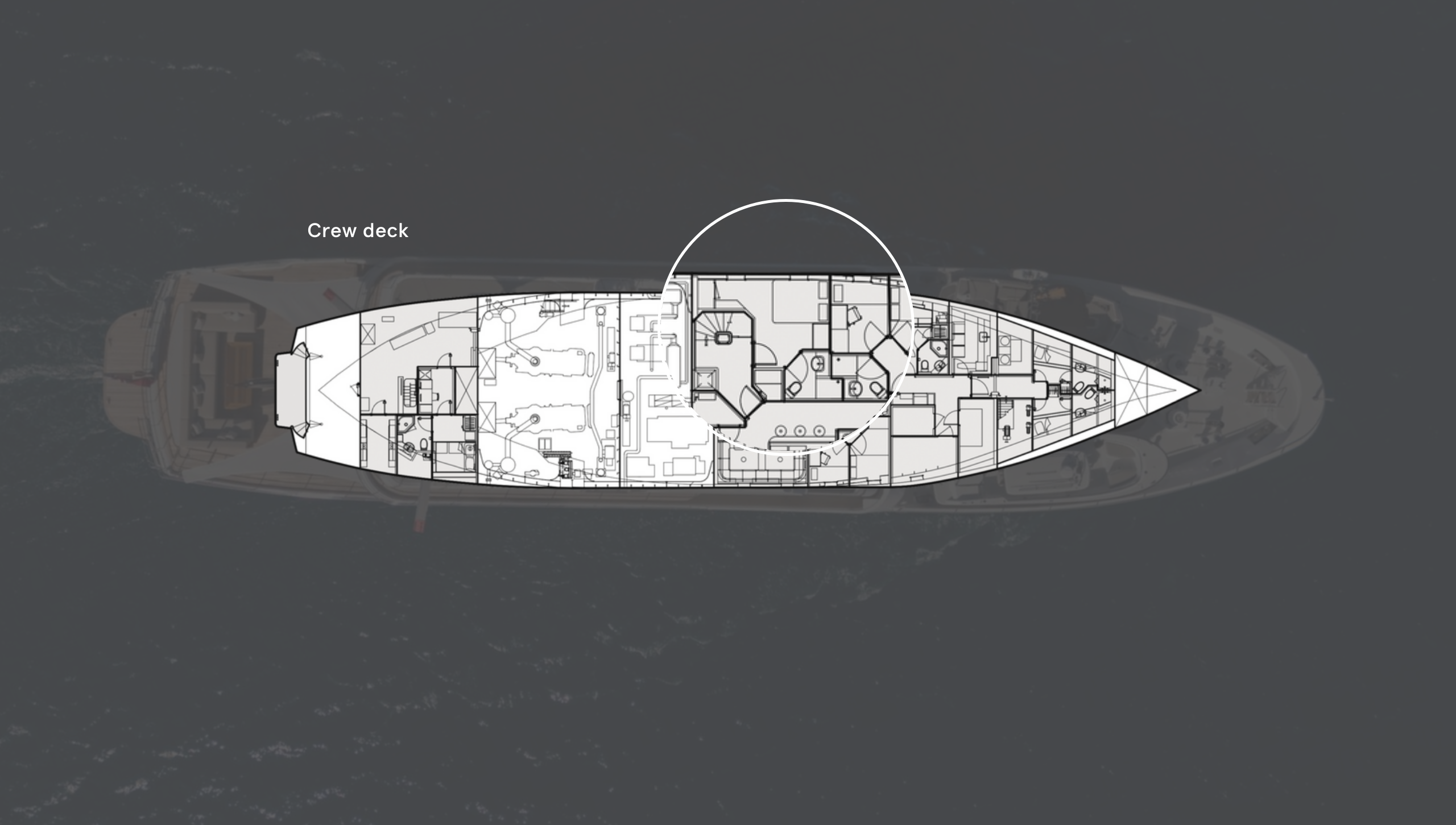

A one-person sauna is a new addition to the sundeck
The principal dining room is surrounded by opening windows and sliding glass doors
A ski nautique and Boston Whaler sit on the foredeck along with two jet skis
The 'kids' zone' encompasses two cabins and a dedicated saloon
One of the nine crew cabins is a generous space for the captain
LOA 52M | FRESHWATER CAPACITY 29,000 LITRES |
LWL 42.61M | TENDERS 13.7M CUSTOM CAT; 6.7M SUPER AIR SKI NAUTIQUE; 5.5M MUNSON BEACHLANDER; 9.1M BOSTON WHALER |
BEAM 10.6M | OWNERS/GUESTS 12 |
DRAUGHT 3.2M | CREW 16 |
GROSS TONNAGE 746GT | CONSTRUCTION STEEL HULL AND SUPERSTRUCTURE |
ENGINES 2 X 1,000HP CATERPILLAR D398B | CLASSIFICATION LLOYD'S REGISTER |
GENERATORS 2X 160KW CATERPILLAR 330G | REFIT NAVAL ARCHITECTURE PERISCOPE NAVAL ARCHITECTS |
STABILISERS 4 X QUANTUM STABILISER FINS, ZERO SPEED | REFIT INTERIOR AND EXTERIOR DESIGN MISHA MERZLIAKOV YACHT DESIGN |
SPEED (MAX/CRUISE) 12/10 KNOTS | ORIGINAL BUILDER/YEAR HMA NAVAL DOCKYARD/1973 |
RANGE AT 10 KNOTS 6,000NM FUEL CAPACITY 150,000 LITRES | REFIT SHIPYARD/YEAR GOLD COAST CITY MARINA 2024 |
FOR CHARTER Y.CO |


